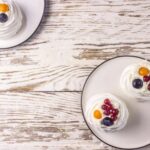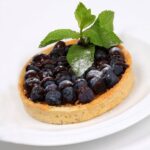Are you wondering what icing to use to decorate a cake? Look no further. Cake decorating is an art that has been around for centuries, with the earliest recorded instances dating back to the 17th century. The use of icing in cake decoration has been a key element in this practice, allowing bakers and decorators to create stunning designs and intricate details on their baked creations.
Icing plays a pivotal role in cake decoration, as it not only adds flavor but also serves as a canvas for creative expression. With various types of icing available, each with its unique properties and uses, choosing the right one can seem daunting.
From classic buttercream to elegant royal icing and versatile fondant, the options are endless. In this article, we will delve into the world of cake decorating and explore the different types of icing available, their uses, and factors to consider when selecting the best option for your cake.
Aspiring bakers and experienced decorators alike will find valuable information on how to choose the perfect icing for their cakes. Whether it’s for a classic birthday cake or an elaborate wedding masterpiece, understanding the various types of icing and their respective uses is essential for creating visually stunning and delicious desserts. So let’s dive into this delightful world of cake decorating and discover the art of choosing the right icing for your next baking adventure.
Different Types of Icing
When it comes to decorating a cake, the type of icing you use is crucial in achieving the desired look and taste. There are several different types of icing that can be used, each with its own unique qualities and uses. Understanding the characteristics of each type of icing is essential in determining which one to use for your cake decorating project.
Buttercream icing is a popular choice for many cake decorators due to its creamy texture and ease of use. It is perfect for creating smooth finishes or intricate designs with piping techniques. On the other hand, royal icing is known for its ability to harden, making it ideal for delicate decorations such as flowers and lacework. Fondant icing, on the other hand, is often used for sculpted cakes due to its pliability and smooth finish.
Cream cheese icing offers a tangy flavor that pairs well with carrot cake or red velvet cake, while ganache provides a rich and indulgent chocolate flavor that complements chocolate cakes perfectly. Each type of icing has its own unique features that make it suitable for specific cake types and decorative styles.
Considering factors such as texture, consistency, flavor, and preferred decorating techniques will help you determine which type of icing to use for your cake decorating project. By understanding the different qualities of each type of icing, you can make an informed decision that will result in a beautifully decorated and delicious cake.
| Type of Icing | Main Characteristics |
|---|---|
| Buttercream | Creamy texture, easy to work with, versatile |
| Royal Icing | Harden when dried, ideal for intricate designs |
| Fondant | Pliable, provides smooth finish, great for sculpted cakes |
| Cream Cheese | Tangy flavor, ideal for carrot or red velvet cakes |
| Ganache | Rich chocolate flavor, perfect for chocolate cakes |
Factors to Consider When Choosing Icing
When it comes to choosing the right icing for decorating a cake, there are several factors that should be taken into consideration. Each type of icing has its own unique characteristics, and understanding these factors will help you make the best decision for your specific cake decorating needs.
Texture and Consistency
One important factor to consider when choosing icing is the texture and consistency of the icing. Buttercream icing is smooth and creamy, making it perfect for creating intricate designs and decorations on cakes.
Fondant icing, on the other hand, has a more elastic texture, making it ideal for covering sculpted cakes and creating a clean, polished finish. Understanding the texture and consistency of each type of icing will help you decide which one is best suited for your particular cake decorating project.
Flavor
Another crucial factor to consider when choosing icing is the flavor. Different types of icing have different flavors, and it’s important to select an icing that complements the flavor of your cake. For example, cream cheese icing pairs perfectly with carrot cake, while ganache is an excellent choice for chocolate cakes. Considering the flavor profile of each type of icing will ensure that your cake not only looks beautiful but tastes delicious as well.
Decorating Techniques
Lastly, when choosing the right icing for cake decoration, it’s essential to consider the specific decorating techniques you plan to use. Royal icing is known for its ability to dry hard, making it ideal for intricate piping work and creating detailed designs.
Buttercream icing, on the other hand, can be easily manipulated using piping bags and tips to create various shapes and textures. Understanding how each type of icing responds to different decorating techniques will help you achieve your desired decorative effects on your cake.
Considering these factors – texture and consistency, flavor, and decorating techniques – will guide you in choosing the best icing for your next cake decorating project. Whether you are creating a classic layered cake or an elaborately sculpted masterpiece, selecting the right icing will be instrumental in bringing your artistic vision to life on your baked creation.
Best Icing for Different Cake Types
When it comes to cake decorating, choosing the right type of icing is crucial to achieving the desired look and taste of the finished product. Different types of cakes require different icings in order to complement their flavors and textures. Here are some popular cake types and the best icing to use for each:
- Classic Cakes: Buttercream icing is the best choice for classic cakes such as vanilla, chocolate, or red velvet. Its smooth texture and creamy flavor make it a versatile option for any type of cake.
- Intricate Designs: Royal icing is perfect for creating intricate designs on cakes. It hardens quickly, making it ideal for detailed decorations such as lace patterns or delicate flower petals.
- Sculpted Cakes: Fondant icing is the go-to choice for sculpted cakes as it can be rolled out into thin sheets and molded around cake shapes. Its smooth finish provides a clean canvas for intricate designs.
- Carrot Cake: Cream cheese icing pairs perfectly with the warm spices and moist texture of carrot cake. Its tangy flavor complements the sweetness of the cake, making it a beloved combination.
- Chocolate Cakes: Ganache is a rich and decadent option for chocolate cakes. Made from chocolate and cream, ganache adds a luxurious touch to any chocolate dessert.
When deciding what icing to use to decorate a cake, it’s important to consider not only the flavor but also the consistency and decorative possibilities of each type. Experimenting with different icing options can lead to discovering new favorite combinations that elevate your cake decorating skills.
Remember that these suggestions are just starting points – feel free to mix and match icings according to your personal preference or even create your own unique combinations that suit your taste and decorative vision.
Essential Tools for Cake Decorating
When it comes to cake decorating, having the right tools is essential to ensure a successful and professional-looking finished product. Whether you are a beginner or an experienced baker, having the proper tools can make all the difference in creating beautifully decorated cakes. Here are some essential tools for cake decorating:
- Piping bags and tips: Piping bags come in various sizes and materials, such as disposable plastic or reusable cloth. Coupled with an assortment of tips, piping bags are essential for creating intricate designs, borders, and writing on cakes.
- Offset spatula: An offset spatula is a long, narrow metal tool with a bent handle that is used to apply and smooth icing on the sides and top of a cake. This tool allows for precise control and creates a smooth finish.
- Icing smoother: Also known as a bench scraper, an icing smoother is used to achieve sharp edges and smooth surfaces when working with buttercream or ganache. It helps create a polished look on the sides of the cake.
- Turntable: A turntable is a rotating platform that makes it easier to ice and decorate cakes evenly. By placing the cake on the turntable, decorators can rotate it as they work, ensuring consistent coverage and designs around the entire cake.
These essential tools are just the beginning when it comes to cake decorating. Depending on the specific techniques you plan to use or designs you want to create, there may be additional tools that would be beneficial. Investing in quality tools can greatly improve your cake decorating skills and overall finished products.
In addition to these physical tools, having a well-organized work area with plenty of space for your supplies can also contribute to successful cake decorating. Having everything within reach and easily accessible will streamline the process and lead to better results. With these essential tools in hand, you’ll be well-equipped to take on any cake decorating project using various types of icing.
Step-by-Step Guide to Decorating a Cake
When it comes to decorating a cake, choosing the right icing is crucial to achieving the desired look and taste. Each type of icing has its own unique properties and is best suited for specific decorative techniques. In this step-by-step guide, we will explore how to prepare a cake for icing and demonstrate different decorative techniques for each type of icing.
Before you begin decorating your cake, it’s important to ensure that the cake layers are level and crumb-free. You can achieve this by using a long serrated knife to trim off any uneven areas and then applying a thin layer of frosting as a crumb coat. This step will help seal in any crumbs and create a smooth base for the final layer of icing.
For buttercream icing, you can use an offset spatula to spread the frosting over the cake evenly. To create decorative swirls or peaks, you can use a piping bag with various tips such as star or round tips. Royal icing, on the other hand, is best used for intricate designs such as lacework, stringwork, or delicate flowers. It can be piped using a small round tip or used to flood large areas for a smooth finish.
Fondant icing is popular for sculpted cakes and can be rolled out and draped over the cake. It allows for creative designs and shapes due to its pliability. Cream cheese icing pairs well with carrot cake and is typically spread over the cake in smooth layers or swirled with an offset spatula. Lastly, ganache is perfect for chocolate cakes as it creates a shiny glaze when poured over the cake or can be whipped into soft peaks for piping decorations.
In summary, understanding which type of icing to use when decorating a cake is essential in achieving the desired look and taste. Whether you’re working with buttercream, royal icing, fondant, cream cheese frosting, or ganache, each type of icing requires specific preparation and application techniques. By following this step-by-step guide, aspiring bakers can successfully decorate their cakes with confidence and creativity.
Tips for Successful Cake Decorating
Practice Makes Perfect
One of the most important tips for successful cake decorating is to practice your skills. Whether you’re a beginner or an experienced baker, honing your icing and decorating techniques takes time and patience. Start by practicing basic piping techniques with buttercream icing on parchment paper or a practice cake. As you become more confident, experiment with more complex designs and different types of icing. With consistent practice, you’ll improve your skills and create beautiful, professional-looking cakes.
Experiment With Different Icing Combinations
When it comes to cake decorating, don’t be afraid to experiment with different icing combinations. While certain types of icing are traditionally paired with specific cake flavors, there’s no hard and fast rule that dictates which icing should be used on a particular cake.
For example, try using cream cheese icing on a classic chocolate cake or ganache on a vanilla sponge. By experimenting with different combinations, you’ll discover unique flavor pairings and creative design options that will set your cakes apart.
Use Food Coloring and Edible Decorations
Enhance your cake decorating skills by incorporating food coloring and edible decorations into your designs. Food coloring allows you to create custom hues for your icing, while edible decorations such as sprinkles, edible glitter, and fondant shapes add depth and visual interest to your cakes. Whether you’re aiming for a bold and vibrant look or a soft pastel palette, food coloring combined with creative use of edible decorations can take your cake designs to the next level.
Aspiring cake decorators can enhance their skills by practicing regularly, experimenting with different icing combinations, and incorporating food coloring and edible decorations into their designs. These tips will not only help decorators improve their techniques but also encourage them to unleash their creativity when it comes to decorating cakes.
Conclusion
In conclusion, the right icing can make all the difference when it comes to cake decoration. Whether you’re looking to create a classic buttercream-frosted cake or a beautifully sculpted fondant creation, understanding the different types of icing and their uses is essential. Each type of icing has its own unique texture, flavor, and decorating techniques, so it’s important to consider these factors when choosing the best icing for your cake.
It’s also important to remember that practice makes perfect when it comes to cake decorating. Experimenting with different icing combinations, using food coloring and edible decorations, and honing your skills with various decorating techniques will help you elevate your cake decorating game. And don’t forget about the essential tools for cake decorating, such as piping bags and tips, offset spatula, icing smoother, and turntable – having the right equipment can make the process much smoother.
Overall, choosing the right icing for cake decoration is crucial in bringing your creative vision to life. No matter what type of cake you’re working with or what design you have in mind, understanding the different types of icing and how to use them effectively will set you on the path to successful cake decoration.
So whether it’s a classic buttercream finish or an intricate royal icing design, remember to consider what icing to use to decorate a cake – it can truly make all the difference in creating a stunning and delicious work of art.
Frequently Asked Questions
What Type of Icing Is Best for Cake Decorating?
The best type of icing for cake decorating is typically buttercream icing. This type of icing is easy to work with, holds its shape well, and offers a smooth finish that is perfect for decorating cakes.
What Are the 5 Most Commonly Used Icings for Cakes?
The five most commonly used icings for cakes are buttercream, royal icing, fondant, ganache, and cream cheese frosting. Each of these icings has its own unique properties and can be used for different cake decorating techniques.
What Is the Best Icing to Practice Cake Decorating?
When it comes to practicing cake decorating, buttercream icing is often considered the best choice. Its versatility and forgiving nature make it ideal for beginners to experiment with different piping techniques, textures, and designs without feeling too overwhelmed or discouraged.

Welcome to my blog about home and family. This blog is a place where I will share my thoughts, ideas, and experiences related to these important topics. I am a stay-at-home mom with two young children. I hope you enjoy reading it! and may find some helpful tips and ideas that will make your home and family life even better!





